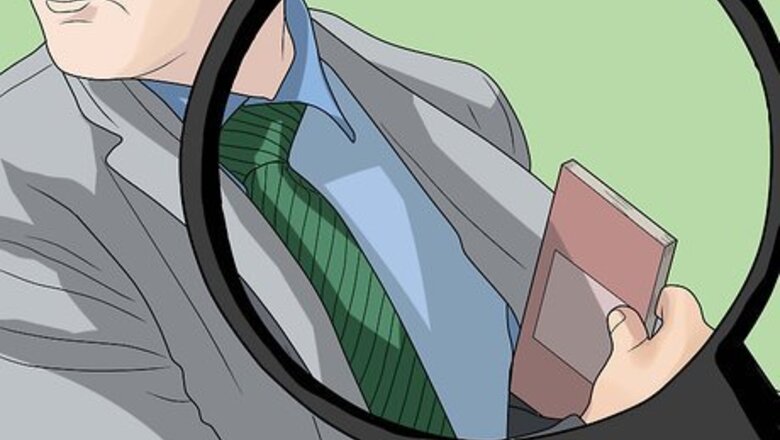
views
- Before you can legally detain a shoplifter, you must see them conceal the merchandise, so wait until the suspect exits the store to approach them.
- Outside the store, approach the shoplifter calmly, and tell them you’ve witnessed them stealing and that they need to come back inside the store with you.
- Once inside the store, retrieve the stolen items, contact the police, and detain the customer until they arrive.
Spotting a Shoplifter

Look for signs that somebody is about to shoplift. Keep in mind that you cannot detain someone whom you think has shoplifted, you must visually see them hide the merchandise on their self or in their belongings before you can accuse them (the person must attempt to leave without paying). You can watch shoplifters from the floor (in person) or catch them via security camera. Spot a potential shoplifter with the following signs: Suspect is looking around them to see what other customers or store employees are doing, suspect is wearing clothing that is clearly too big or loose or clothing that is not in tune with the season (big winter coats in summer), suspect is removing tags from merchandise, suspect is carrying a large bag. etc. There are some benefits to using a security camera. Not only do you watch the shoplifter via an obstructed view and you watch their attempted crime (it's not a crime until they try to leave without paying) from beginning to end, you also have the entire incident on videotape. They are very similar to a dash cam in a police car. If you have it on tape, there is little the shoplifter can do to dispute the crime they committed.

Watch the suspect constantly. Once you start to suspect that a customer may be about to shoplift, it is essential that you keep a watchful eye on them at all times, even if you have to follow them around the store. You must actually see the suspect select the merchandise and attempt to walk out without paying with your own two eyes. Concealing merchandise is not a crime it is only considered shoplifting if the person or persons attempt to leave with merchandise without paying. This happens frequently, especially among teenagers or the first-time shoplifter. They can get "spooked" and dump the merchandise. With a security camera, you have the luxury of someone behind the camera watching and recording the crime as well if you are on the floor. More eyes on the shoplifter works in your favor every time.
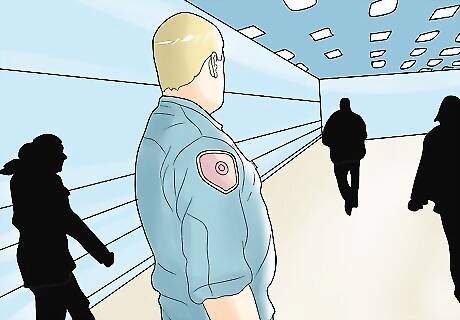
Wait until the suspect exits the store. Before you can legally detain a shoplifter, you must see them conceal the merchandise, watch them the entire time to make sure they don't dump the merchandise and wait for them to exit the store with the merchandise still concealed on them or in their personal belongings. It is necessary to wait until the shoplifter is outside the store to disqualify the excuse that they "intended to" pay. If they bypass the register and the merchandise is not paid for and/or they exit the store (depending upon store layout - not all cash registers are near the exit) this is when you can stop them. You must be particularly careful in stores where merchandise is displayed outside the store front, as shoplifters can use the excuse that they are still shopping and intend to return inside to pay. Rather than approaching the shoplifter alone, it is always best to have another employee with you, and at least one of you should be of the same sex as the suspect.There is no merchandise worth your health, safety or life.
Detaining a Shoplifter

Approach the shoplifter calmly. Outside the store, approach the shoplifter calmly, from the front if possible. Once you have stopped the shoplifter, whether it be in the mall or in the parking lot, identify yourself as a Store Detective or Loss Prevention Associate (there are several titles) and firmly yet calmly advise the shoplifter that you have witnessed them hide merchandise which was not paid for and that you need them to come back into the store with you. Again, here is where the visual aspect is very crucial: tell the shoplifter where they hid the merchandise and exactly what merchandise they have stolen. This will let them know that you have been watching them the entire time and to argue or dispute this fact is pointless. It bolsters your professionalism as well. Do not be surprised if they throw the merchandise at you and try to make a run for it or even return the merchandise to you in the parking lot or mall and tell you that they "forgot" to pay for it. They are clearly attempting to downplay their crime or even "explain away" their crime. Do not fall for this. You should never attempt to chase a shoplifter who runs away, at least within the store or shopping mall. Two people running through crowded areas poses a risk to the safety of shoppers and store employees. Sometimes an exception can be made if the suspect runs into a parking lot or empty area, but it should go beyond the confines of the property.
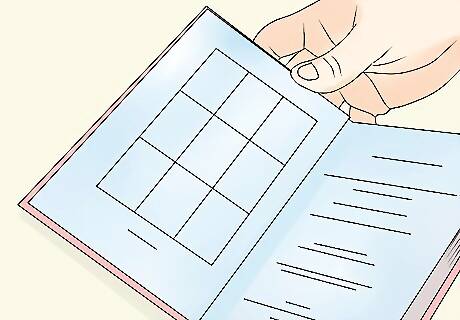
Retrieve the stolen merchandise. It is best to try to retrieve the stolen merchandise (or at least some of it) while you are still outside the property, as this will confirm the theft and validate your detention of the shoplifter. If it becomes obvious that the suspect no longer has the merchandise on, it is best to apologize and let them go, as you have no proof of theft. This is known as a "bad stop".
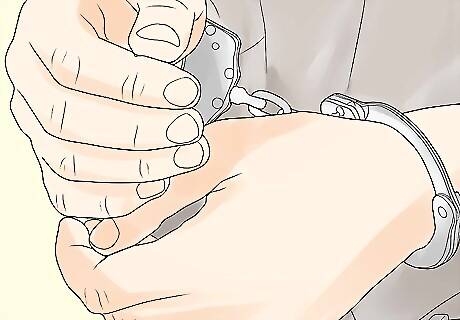
Escort the shoplifter back into the store. Tell the shoplifter that you need to take them back to the store to "discuss the matter in detail". Escort the shoplifter with you and the other employee on either side of them.The majority of shoplifters will be humiliated about being caught and will quietly comply in the hopes of being released. Take them to the loss prevention office and retrieve the stolen merchandise from them, if you have not done so already. Take a picture of the shoplifter and the merchandise stolen. At this point, you should call the police. The sooner you can hand the matter over to them the better, otherwise, you run the risk of detaining the shoplifter for a time that may be deemed "unreasonable" by a judge and face charges yourself. If the shoplifter is a minor, an elderly person, or a person with mental disabilities, you may wish to call relatives to come pick them up instead of calling the police, at your discretion. Tally up the amount stolen - this can make the crime a misdemeanor or a felony, depending on the state. It would be a good idea for you to know your state's laws regarding these amounts.
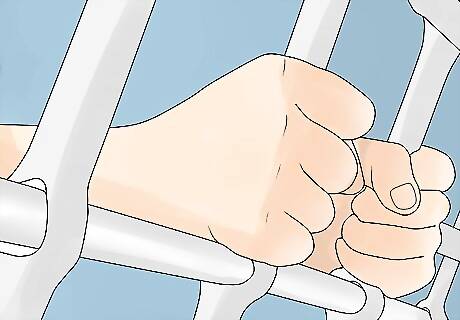
Ensure that you hold the shoplifter for a "reasonable" amount of time only. It is very important that you only detain the shoplifter for a "reasonable" amount of time, and use no more than "reasonable force" when handling them. Otherwise, you may be exposed to civil liability for negligence. It is possible to use handcuffs to detain a shoplifter if they become violent and pose a real threat to the safety of the store staff and customers. However, the person who applies the handcuffs must have proper training, and will be responsible for the detainee's health and safety from that point onwards. Using excessive force, extreme foul language, verbal threats and racial or religious slurs are all considered to be unlawful.
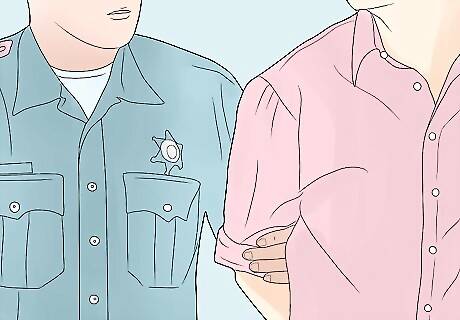
Hand the situation over to the police. When the police arrive, depending the amount of the theft or some other situation (outstanding warrant, if the shoplifter is obviously drunk or under the influence of some drug). The shoplifter will be issued a citation (misdemeanor and no outstanding warrants, etc.) which will give them a court date to appear to answer the shoplifting charge. The shoplifter will then be escorted from the store and will be advised to not return to the store under any circumstances (ask police for a no trespass warrant). This is where the picture of the shoplifter also comes in handy: if you spot that same shoplifter in the store sometime after the incident (e.g., 1 year or 6 months) you can tell them to leave the store even if they have not stolen anything during this trip to your store.













Comments
0 comment